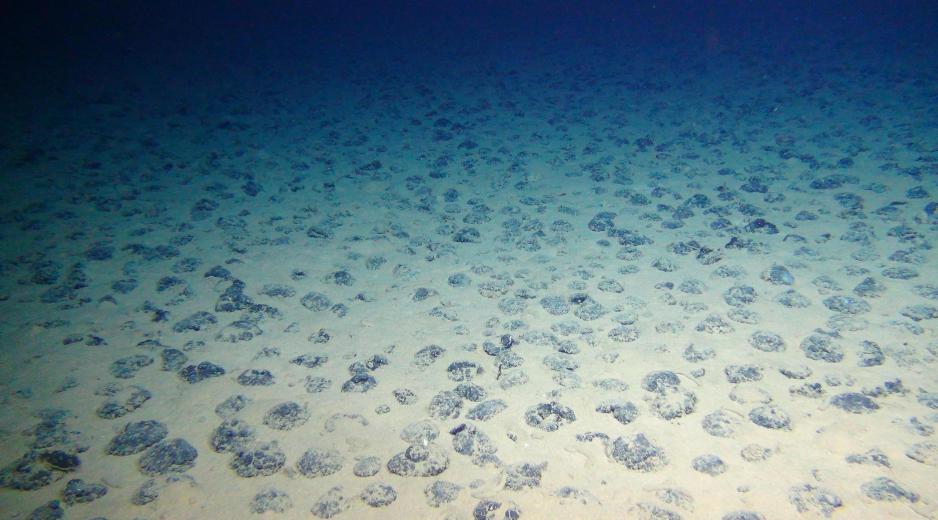Norway Aims to Open Arctic Waters to Deep-Sea Mining

Norway may soon open waters in the Arctic and sub-Arctic to sea floor mining. The growing demand for important minerals, including copper and nickel, may require this new type of mining, the Norwegian government says.
Norway is looking to open an area roughly the size of Germany to deep-sea mining. The proposed area reaches roughly from the latitude of Bodø and the Norwegian Sea to Svalbard in the Barents Sea. The water depth in the proposed area is up to 4,000m deep.
The Norwegian government intends to submit plans to the country’s parliament about the opening in the coming weeks. In related proceedings the International Seabed Authority, operating under the auspices of the United Nations, is also currently working on rules for seafloor mining, with initial regulations expected next month.
The seafloor in Norway’s proposed mining area is rich in polymetallic nodules, containing high concentrations of copper, nickel, cobalt and other sought-after metals. Norway argues that these materials, commonly used in batteries and electric vehicles, are critical to a successful energy transition.
Unknown environmental impact
Norway’s government, including its prime minister Jonas Gahr Støre (Labor), state that subsea mining can be conducted without impact on ocean life. Environmentalists, however, caution that the deep seas remain some of the least explored and understood zones of the planet.
This lack of knowledge does not allow for comprehensive assessments of the impact of deep-sea mining, environmentalists say. Removing the metallic nodules from the sea floor could quickly and irreversibly destroy the habitat for known as well as unknown species.
“Such activities are going to happen anyhow.”
Troy Bouffard, Director of the Center for Arctic Security and Resilience at University of Alaska Fairbanks
Earlier this year scientists found more than 5,000 species in the deep seas in the Pacific.
And just last week the European Academy of Sciences warned of the catastrophic consequences of deep sea mining and called for a moratorium on the practice. Rather than exploiting new deposits of key minerals in the world’s oceans, they suggest that improvements in recycling rates and onshore deposits can fill the growing need.
The scientists also warn that mining would release large quantities of sediment disturbing sea floors which took thousands of years to develop.
Need for strategic resources
In addition to potential habitat loss, the government’s proposal will likely also see opposition from Norway’s fishing operators, who rely heavily on the waters surrounding the archipelago.
Apart from the need to balance the demand for critical metals for the energy transition and environmental protection, geopolitical factors are also part of the equation.
Norway’s mining rights to the sea floor around Svalbard arise out of the Svalbard Treaty. Other signatories, including EU countries, the US and most importantly Russia can also lay claim to a portion of the waters surrounding the archipelago.
With expected shortages for minerals like copper and nickel in the coming decades, more countries may begin to look for them in new places, like the Arctic sea floor.
Norway could lead the way

Norway could well become one of the first, or possibly the first, country to engage in seafloor mining and demonstrate its feasibility. Supporters of the country’s initiative say that the country’s track-record when it comes to responsibly exploiting natural resources, makes it a good candidate to open the door to this new industry.
“Such activities are going to happen anyhow, and Norway is the right nation to demonstrate how to do it right,” says Troy Bouffard, Director of the Center for Arctic Security and Resilience at University of Alaska Fairbanks.
Norway’s nearly-perfect track record with offshore oil production serves as a good example, Bouffard continued.
“Norway employs a performance-based regulatory regime approach, versus prescriptive-based. No other nation uses this approach, largely because it takes effective national labor laws and frameworks to enable it.”
Norway’s leadership role providing resources, training, and education to other nations, including Russia, is also key to shaping the sector. This holds especially true in the Barents Sea, which is “critical to both Norway and Russia.”
“Norway has an excellent oil production record and consistently demonstrates strong Arctic maritime environmental stewardship through a performance-based regulatory regime and is in the best position to show the world how to mine the seabed responsibly,” Bouffard concluded.
High North News is an independent newspaper published by the High North Center at the Nord University. High North News is not responsible for the content or opinions expressed on external web pages.
You can read the original here.